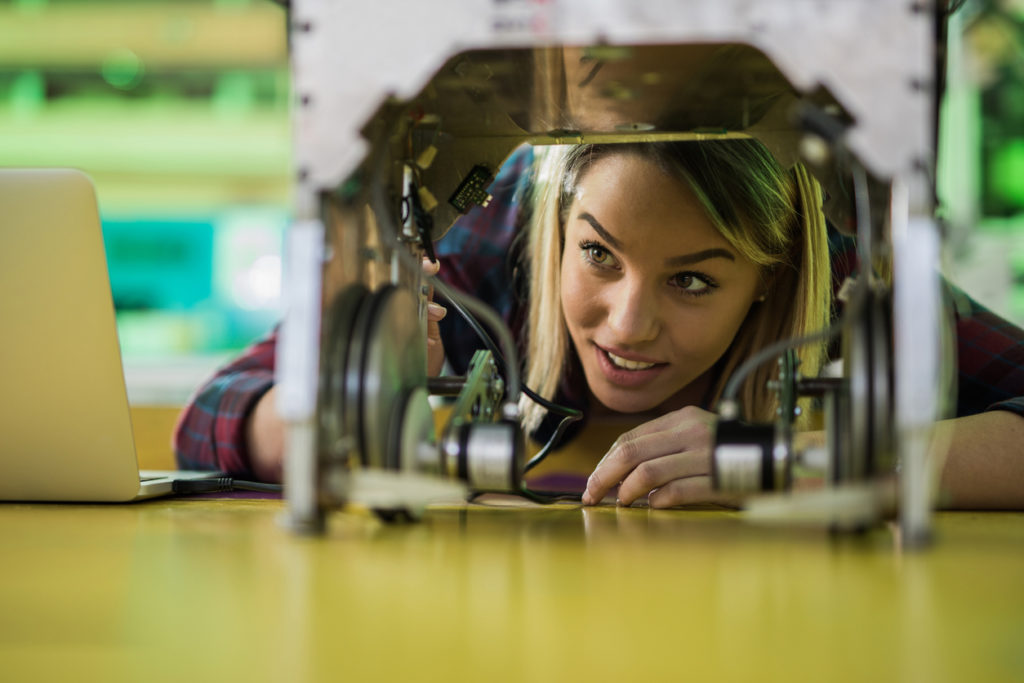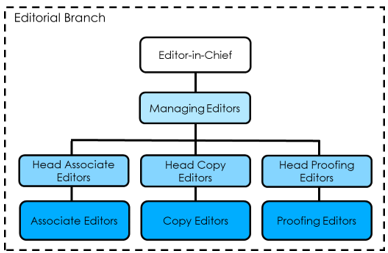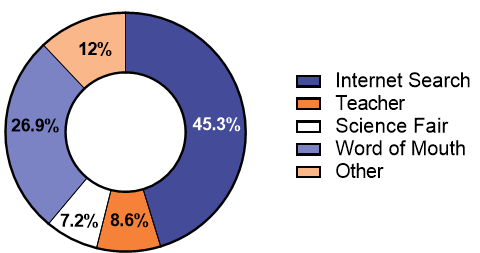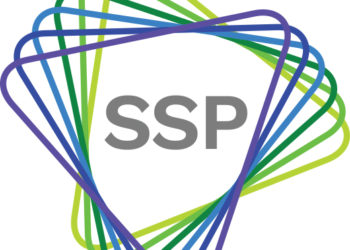Editor’s Note: Today’s Post is by Kari Mattison, the Editor in Chief at the Journal of Emerging Investigators (JEI) where she oversees and leads the publication of all JEI manuscripts as well as the development of new resources to help JEI’s young author base. Kari has been involved with JEI since 2018, having previously been an Associate and Managing Editor with the journal. She is also a PhD Candidate in Genetics and Molecular Biology at Emory University in Atlanta, Georgia.
Next year, the Journal of Emerging Investigators (JEI) is celebrating 10 years of publishing science from middle school and high school investigators. JEI is an open-access, no-fee journal for middle and high school authors. As we approach our anniversary year, I want to share with the community what we have learned and how others may benefit from engaging with younger student investigators.
JEI was started by a group of graduate students at Harvard University who noticed that middle and high school students would put work into science fair projects and the data and conclusions from that work almost never left the local science fair. Since our first manuscript was published in 2012, we have published over 450 manuscripts highlighting the work of middle and high school scientists from across the globe.

Goals of JEI
The primary goal of JEI is simple: education of our student authors (and volunteers) in the research and publication processes.
We believe in the idea of “science with practice.” Our young scientists gain the most when they practice science through designing and performing research, participating in peer review, reading the work of others, and putting everything into a cohesive manuscript. Ultimately, if we provide the sense of a “scientist” identity to our authors, we have empowered them to pursue their passions and recognize their potential as scientists, and perhaps more importantly these days, as critical thinkers early in their academic careers.
JEI Organizational Structure
JEI has a phenomenal team of volunteers who run the editorial side of our organization. Our volunteers are graduate students, postdocs, and professionals at various institutions and companies. Since 2012, we have grown our volunteer base, not just in terms of numbers, but in terms of location. We have active volunteers in 33 states (along with a handful from countries outside of the US). Our senior editorial staff is comprised of me (the Editor in Chief), nine managing editors, a head proofing editor, and three head copyeditors (the head associate editor position is new and not yet filled). I think, as many others have discovered over the past year, email, Slack, and Zoom do a good job of uniting a geographically diverse group volunteers into one cohesive team. Using these forms of communication amongst the editors allows us to manage manuscripts despite not being physically in the same place every day.

There are also positions available outside of the editorial branch, which allows our volunteers to pick the role and opportunities that best fit their own interests and needs. These positions are overseen by our Executive Director (the only paid staff member at JEI) and coordinate with the editorial branch via the Editor in Chief. Our Executive Director also communicates and reports to our board of directors which is comprised of professionals who represent the various stakeholders of JEI.
Tailoring the Review Process for Young Authors
It probably goes without saying, but the review process at JEI is different from what you will see at any high level, professional journal. Our process is designed so our student authors (and their research mentors) have a network of editors providing educational feedback from initial submission until final publication of the manuscript.
At each stage of the editorial process, our goal as an editorial team is to make sure we don’t just tell the authors “what” is wrong, but “why” it is wrong and then “how” to fix it. Our volunteers are educators just as much as they are reviewers and editors. One of our reviewers captured this idea perfectly when they said we are “representatives of science” to our student authors. If we do our job correctly the students leave their experience at JEI with much more than a PDF of their published work.
To illustrate this concept, here is some text from one of our reviewers on a manuscript that is currently in revision:
What are zeolite, Moringa oleifera seed powder, and activated charcoal? You do a great job of telling us how they will filter out contaminants but never mention what they are, where they come from, and why they might be a cost-effective alternative. Is there any previous study or data that uses these compounds for water filtration? What were the conclusions from those studies?
This comment follows the standards that we ask our reviewers to adhere to. The reviewer has given specifics of what they are interested in knowing and provided guiding questions to the authors for addressing the comment. Additionally, the reviewer points out what has already been done well, which is just as important as highlighting areas to fix.
Our reviewers must also be cognizant of the different constraints faced by our student authors. This includes understanding how asking for additional replicates, controls, etc. in an experiment may be something that our authors are unable to do. In these cases, we ask our authors to use the discussion to talk about the flaws in their design so they can learn and use the experience to design more robust experiments in the future. Additionally, access to research literature is a major hurdle our authors face. Our goal is that authors cite primary scientific literature as much as possible, but we are also aware that their access to these sources is limited by what their school and local libraries provide. We do provide some resources for our authors on our website, but we are always looking for more ways to expand the access we provide to primary literature for our authors.
We also allow our reviewers also get creative with the review process. Often, our authors will be sent lists of future experiment ideas with their reviews! Here is an example from the same manuscript referenced above of a future experiment suggested by a reviewer:
You tested your filtration alternatives against single contaminants (which is a great way to approach the experiment!). In the future, if you were to further investigate your results would you consider testing a combination of the contaminants against your filtration alternatives? Do you predict they would be just as effective? Would you also investigate using multiple filtration alternatives at once? Would this be more effective than each alone?
Once scientific reviews are completed and we are happy with the science presented, our manuscripts go through copyediting. At JEI the copyediting is just as important as the scientific review process. Most of our student authors have only written lab reports, or lab notebook entries up to this point. This means that our copyeditors are working to show our student authors how we can communicate science in a clear and concise manner without losing necessary detail.
The areas we see our student authors struggle with most initially are writing their materials and methods sections, as well as figure captions. We are taught in school that you must document each step you do in an experiment in painstaking detail and now we are asking our authors to do something that is counterintuitive to them at this point — cut out information from their methods section. Conversely, with figure captions we see that our authors usually just repeat the title of the graph or figure and leave out necessary information needed to understand what is being shown. To combat this, we like to tell our authors that if they were to give someone just the figure and the caption to read the reader should be able to understand the figure and how the data was collected even without the rest of the manuscript.
Our copyeditors will go through and help rephrase a section of the methods or a caption for the authors and then ask them to use it as a template for the rest of the section. We know that we won’t get things back in a perfect state, and that is okay. Our goal is that our authors give it their best try and our editors will help clean up any rough edges that are remaining.
Each manuscript at JEI usually goes through at least two rounds of copyediting, the first with our copyediting team and the second with a managing editor who is looking for the small errors and inconsistencies that may have been missed in the first round of review. Once we are happy with the content of a manuscript, we let our proofing editors go to work. This may be the most exciting step for our student authors because it’s where they get to see their work go from an unformatted word document into a two-column, figures in-text PDF of their work. Authors review the PDF for any final changes, and once we get the green light, we’ll post the manuscript to our website for anyone to read!
Finding Authors for JEI
At JEI we are incredibly fortunate that we do not have to do much leg work to get authors who want to work with us to publish their work. We have always been curious how our authors hear about JEI. Since we started using Editorial Manager as our submission platform, we have been collecting this data with each submission. We found that our authors find us in two main ways: searching the internet on their own and word of mouth from individuals who have published with us previously.

How Has JEI Stuck Around?
The idea of JEI, isn’t exactly unique. There have been other journals with the same goal of publishing middle and high school work. Some are still around in various capacities, others have come and gone in the time JEI has been around. So, what has made JEI able to stick around for this long? I think there are three main reasons we are still around. These are 1) our volunteers, 2) our submission requirements, and 3) our submission platform.
I believe the primary reason JEI has been successful over the last ten years is our team of volunteers. The education JEI offers isn’t just for our student authors — it’s also for our volunteers. Countless volunteers have commented over the years how being involved with JEI helps them with their own communication skills and has made them reconsider how they approach the peer-review process in general. It also affords our volunteers the opportunity to become familiar with the backend of the publication process and management software which has helped some volunteers to feel more comfortable when submitting their own work. As mentioned before, there are volunteer opportunities outside of the Editorial Branch where volunteers can hone skill sets outside of reviewing and editing manuscripts.
The second component that I believe helps with our longevity is our submission requirements. I think it helps that we don’t require, or quite frankly expect, manuscripts to be submitted in a polished state, ready for review. Our managing editors do a fantastic job in the early stages of the review process to help get manuscripts in a state where they can go out to review, and then each step after that further refines manuscripts into what gets published on our website. The ability to do this whole process goes back to having a volunteer base with the size and commitment of ours – it simply wouldn’t be possible without it.
Lastly, I believe that our use of Editorial Manager to manage our submissions and review process has allowed JEI to grow as a publication. Our editors are easily able to track where manuscripts are in the review process and reach out to ensure that things are moving along. We can monitor submissions out for revision and reach out to authors to see if they need any additional help addressing comments. Using Editorial Manager also makes it easier to communicate with our student authors as we have engineered our setup to send out emails at various stages of the process.
I would be remiss to not acknowledge that the ability to run JEI and use services like Editorial Manager wouldn’t be possible without the financial support we have received over the years. It is thanks to our tremendous sponsors and individual contributors, that we can continue, and expand, our publishing and educational programming.
Final Takeaways from 10 Years Publishing Young Scientist’s Work
Over the years JEI has been growing in the number of submissions received and ultimately published. In 2020, we received 360 submissions and published 117 articles. We invite you to look at previously published JEI manuscripts. You will see all different kinds of work ranging from homemade wind tunnels to test wind mitigation devices on roofs to students who are privileged enough to get research experience in a university lab and are working on new cancer treatments. We are equally proud of all work published at JEI. Above all, the articles that are most rewarding for our volunteers to work on are those where you can see the student author(s) have learned during the process.
Discussion
1 Thought on "Guest Post: Empowering Young Scientists Through Publication – 10 years of the Journal of Emerging Investigators"
Congratulations to you and your colleagues, Kari. JEI is a great idea, very well-executed.



